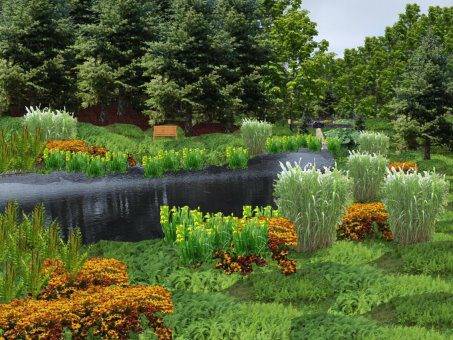Water Lilies & Emergents
Water lilies are among the most popular of aquatic plants and are often the centerpiece of the water garden. A water garden never seems complete without a few beautiful water lilies. Not only are water lilies breathtaking but they provide valuable shade, which helps to keep the pond cool while providing refuge for pond fish. Ideally, thirty to sixty percent of the water surface should be covered with aquatic plants.
Bog & Marginals
The marginal plant group is the largest aquatic plant group by far, containing both hardy and tropical plants. Most of them are true perennials and come back year after year, like your favorite Daylily or Black-Eyed Susan. Marginal plants serve many functions such as adding beauty and providing valuable filtration. They are called “marginals” because they typically grow around the edges or “margins” of a pond or lake. Marginal plants thrive in wet soil or standing water that covers the crown or base of the plant by as little as two inches and up to as much as six inches. Some examples of marginals include sweet flag, marsh marigold, taro, canna, water iris and creeping jenny.
Floaters
Floating plants do just as their name indicates: they float on the water’s surface. Their roots dangle beneath the plant absorbing all their nutrients from the water. Most floating plants do a great job of filtering ponds by removing nutrients directly from the water as opposed to the soil where most other aquatic plants are situated or planted.
Submerged
Like the name implies, this group of plants lives below the water surface. They are commonly referred to as oxygenators. Submerged aquatics do produce oxygen during most of the day. Submerged aquatic plants live entirely under water, almost. Some oxygenators bloom and the flowers often rise to the surface. They include plants such as elodea, anacharis, hornwort, foxtail, cabomba and vallisneria. For the most part, submerged plants absorb their nutrients directly from the water. This means they compete with algae for nutrients, thereby helping to balance the ecosystem.
Putting it All Together
Just like their soil counterparts, a good mix of aquatic plants lends the best visual impact for your water garden. Marginals help to blend the pond into the surrounding landscape, while water lilies provide pops of color at the water’s surface.
Below is a list of field guides that would be very helpful to identify your wetland & pond plants.
Oxygenating Plants Oxygenating plants (also referred to as oxygenators) in ponds and water gardens are best described as underwater plants. They grow with some or all of their foliage (leaves) below the water surface. They can be planted as annual or perennial plants. Some of these plants are considered invasive and may have state regulations concerning the purchase and planting. Check with your local agencies.

























You must be logged in to post a comment.